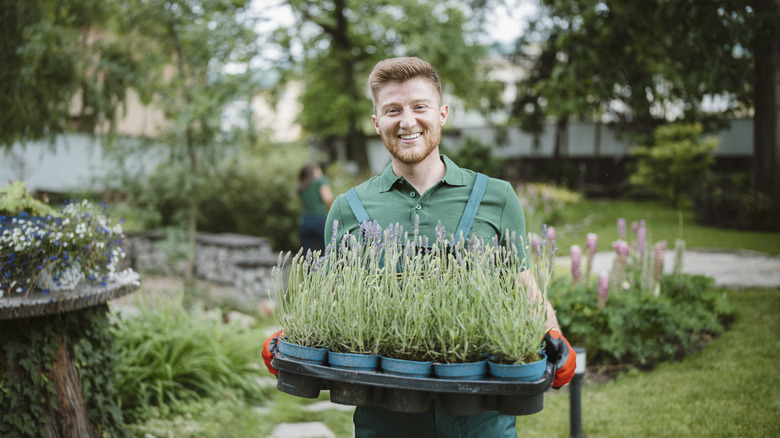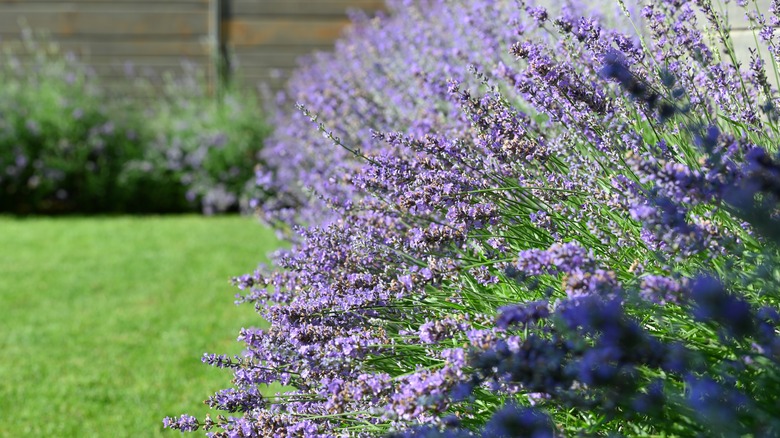The Spot In Your Garden That Leaves Lavender Way Too Exposed
Growing lavender at home sounds really simple. You just need to find a bright and open patch of land in your garden, plant it, and wait for all the fragrant blooms to appear, right? Well, not quite. Too much exposure can actually be disastrous for lavender, and yet many gardeners plant it right where it will struggle the most — in wide open and windy places.
The most common variety of lavender is English lavender (or Lavandula angustifolia) which is hardy in USDA zones 5 through 9, and is much more cold tolerant than French versions that are only hardy in USDA zones 8 and 9. However, too much exposure to the elements is not good for any variety. Even English lavender will be unable to withstand too many windy gusts, and too much cold, especially in the winter. So, before you plant lavender, think twice about where you're putting it. This is one of the most important things you need to know before planting lavender if you want to cultivate a healthy crop.
Why open, windy spaces are tough on lavender
While a little winter's wind doesn't sound like a big deal, it can be a disaster for lavender. Outside of gale force winds and storms, even a strong cold breeze can do damage. Plus, lavender is also really intolerant to frozen or heavy soil. With that said, you may mistakenly think that if the ground is frozen, and there is snow around, the plant will get a drink. However, most lavender varieties need warmth and well-drained soil and, in the wrong spot, roots can be too wet and/or too cold for too long, leading to rot. That's why open fields, or exposed garden beds, may not be a good choice for planting lavender — no matter how perfect they might seem at first glance.
Now if you've already planted your lavender in the wrong place, don't worry, you can propagate new plants fairly easily. In fact, there are many simple propagation techniques to fill your home with lavender. One is to simply snip a healthy stem, dip it in a rooting hormone, and plant it in a pot filled with well-draining and gritty compost until it takes root. Then, you can start your crop fresh in a better location.
Where to plant lavender for best results
The absolutely perfect spot for lavender is one that gets full sun all day but is blocked from cold wind. Placing it against a south-facing wall, inside a courtyard, or behind a sturdy hedge can all be great options. This way, warmth is trapped and the plant is shielded from too much cold or wind.
There is another key point to consider before planting your lavender. Heavy clay, or soil that doesn't drain well, can lead to root rot very quickly so you should plant your lavender once it's already gotten warm outside – such as in early Spring – and you should prune your plants annually for best results. If you're dreaming of a showy garden display, there are many ideas for a stunning flower garden that incorporate lavender. Just remember that shelter is key. A little planning is all it takes to keep your lavender lush, fragrant, and happy which will also encourage pollinating insects to visit your garden.


